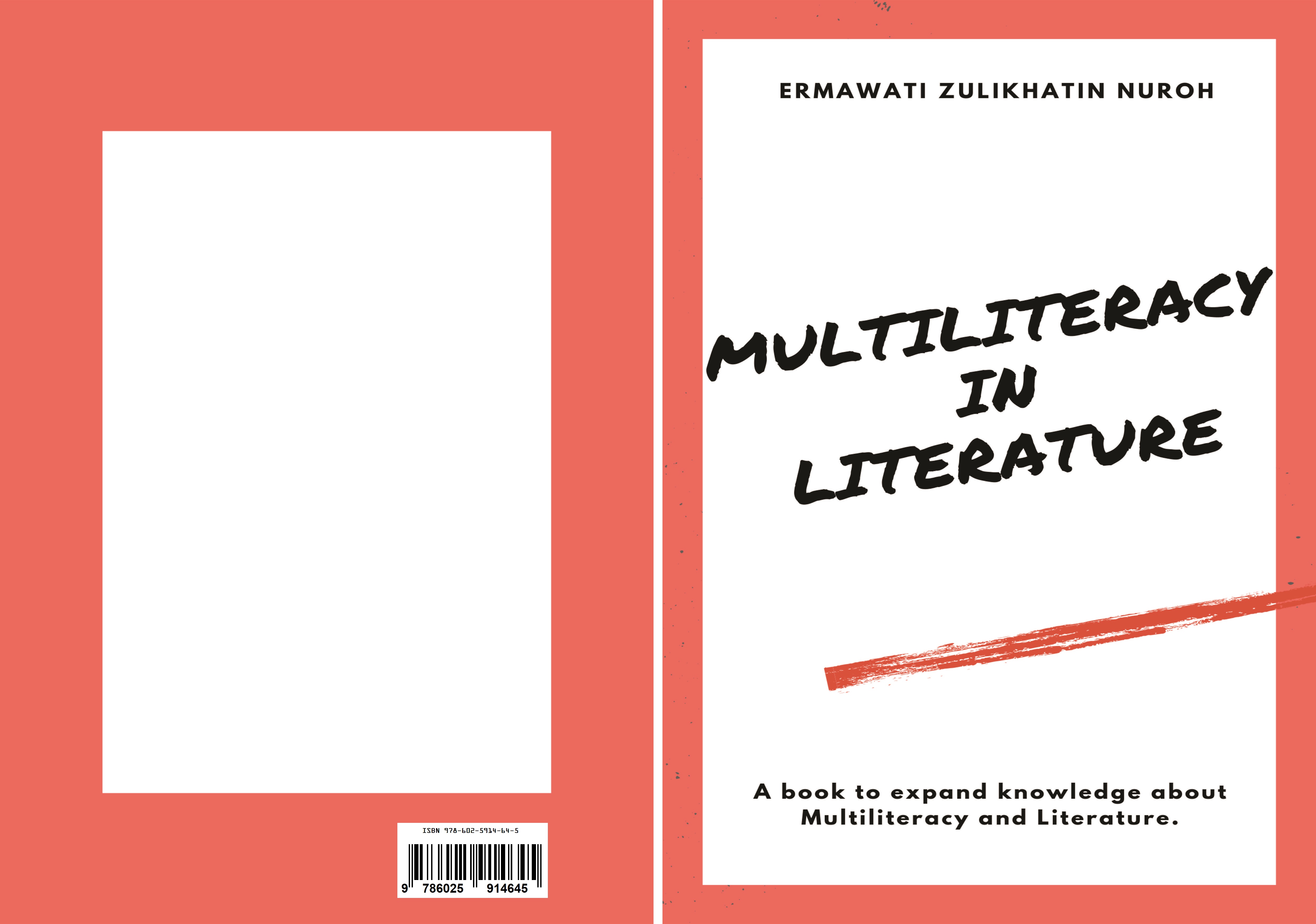Multiliteracy In Literature
DOI:
https://doi.org/10.21070/2019/978-602-5914-64-5Keywords:
Multiliteracy, LiteratureAbstract
Multiliteracy is the ability to use various ways to express and understand ideas and information by using forms of conventional and innovative text, symbols and multimedia. Multiliteracy according to the New London Group (1996) is a pedagogy of multilateral that accepts and encourages a variety of perspectives, tools, and the perspective of linguistic, cultural, communicative, and technology, then used as a tool in preparing better toward the rapidly changing global world. In addition, it can also be used to continue to help someone have a possible opportunity in creating new life and also contribute to their communities in their future. Multiliteracy related to multimodal because a lot of fashion is encouraged for use in a variety of forms of expression. In addition, a wide range of technology and communication channels enables a variety of modes to use in expressing themselves.
Downloads
References
Abidin, Yunus. (2014). Desain Sistem Pembelajaran dalam Konteks Kurikulum 2013. Bandung: PT Refika Aditama
Abidin, Y. 2015. Pembelajaran Multiliterasi. Bandung. PT Refika Aditama.
Alim, Sumarno. 2011. Pemanfaatan ICT Dalam Proses Merancang dan Mengimplementasikan Model Pembelajaran Inovatif Design Centret Intuctional.
Badrun, Ahmad. 1983. Pengantar Ilmu Sastra. Surabaya: Usaha Nasional.
Borsheim, Calin, Kelly Merrit, & Dawn Reed. 2008. Beyond Technology for Technology’s Sake: Advancing Multiliteracies in the Twenty First Century in The Clearing House
Cope dan Kalantzis. (2005). Multiliteracies Literacy Learning and The Design of Social Futures. New York. Rotledge, Taylor & Francis Group.
Coughlan, Samantha. 2008. Advocating for the Arts in an Age of Multiliteracies in Language Arts, 86,2 www.proquest.umi.pqd/web
Debes, J. 1969. The loom of Visual Literacy: An overview Audiovisual Instruction.
Edlesky, C. 2006. With Literacy and Justice for All: Rethinking the Social in Language and Education (3rd ed). Mahwah, NJ: Erlbaum.
Graham, Meadow Sherril, Sheila Benson, Lisa Storm Fink. 2010. A Springboard Rather Than a Bridge. Diving into Multimodal Literacy. In English Journal (High School Edition) Urbana: November, vol 200, 153.
Gilster, P. (1997), Digital literacy. New York: Wiley Computer Publications.
Gee, J. 1992. The Social Mind: Language, Ideology, and Social Practice. New York: Begin & Garvey
Hasset, Dawnene D., and Jen Scoot Curwood. 2009. Theories and Practice of Multimodal Education: The Instructional Dynamics of Picture Book and Primary Classroom in The Reading Teachers 63,4. International Reading Association.
Jenkins, H. 2006. Convergence Culture: Where Old and New Media Collide. New York: New York University Press.
Jones, R. H., & Hafner, C. A. 2012. Understanding digital literacies: A practical Introduction. London, UK: Routledge.
Knobel, M., & Lankshear, C. (Eds.). (2007). A new literacies sampler. New York, NY: Peter Lang
Kress, G. 2003. Literacy in the New Era. London: Routledge
Morocco, CC, et al, 2008. Suported Literacy for Adolescent. Transforming Teaching and Content Learning for The Twenty- First Century. San fransisco: Josey Bass A Wiley Imprint.
Esten, Mursal. 1978. Kesusastraan. Bandung: Angkasa.
Nurgiyantoro, Burhan. 2016 (Ed. Ke-2). Penilaian Pembelajaran Bahasa Berbasis Kompetensi. Yogyakarta: BPFE.
New London Group. 1996. A Pedagogy of Multiliteracies: Designing Social Feature. Harvard Education Review, 66.
Olge, D. et al. 2007. Building Literacy in Social Studies: Startegies for Improving Comprehension and Critical Thinking. Alexandria: ASCD
Sugiyono. 2008. Metode Penelitian Kuantitatif, Kualitatif, dan R&D. Bandung: Alfabeta
Thaba, A. (2017). Pembelajaran Multiliterasi Educational Corner. (Online) https://thabaart.blogspot.co.id. tribunnews.com, 5 Mach 2019
Vasquez, V. 2003. Getting Beyond “I like the Book”: Creating Space for Critical Literacy in K-6 Classrooms. New York, DE: international Reading Association.
Vygotsky, L. 1986. Though and Language. Cambridge, MA: MIT Press. York: Bergin & Garvey.
William, Bronwyn T. 2008. Tomorrow will not be like today: Literacy and Identity in a World of Multiliteracies.International Reading Association. Internet Source: https://www.shmoop.com/little-women/summary.html
https://www.britannica.com/topic/Great-Expectations-novel-by-Dickens
https://www.sparknotes.com/lit/scarlet/summary/
https://www.wuthering-heights.co.uk/wh/summary.php
https://www.coursehero.com/lit/The-Pickwick-Papers/plot-summary/
https://www.cliffsnotes.com/literature/t/the-three-musketeers/book-summary

Published
How to Cite
License
Authors retain copyright and grant the Umsida Press right of first publication with the work simultaneously licensed under a Creative Commons Attribution 4.0 International License that allows others to share the work with an acknowledgement of the work's authorship and initial publication in this platform.

